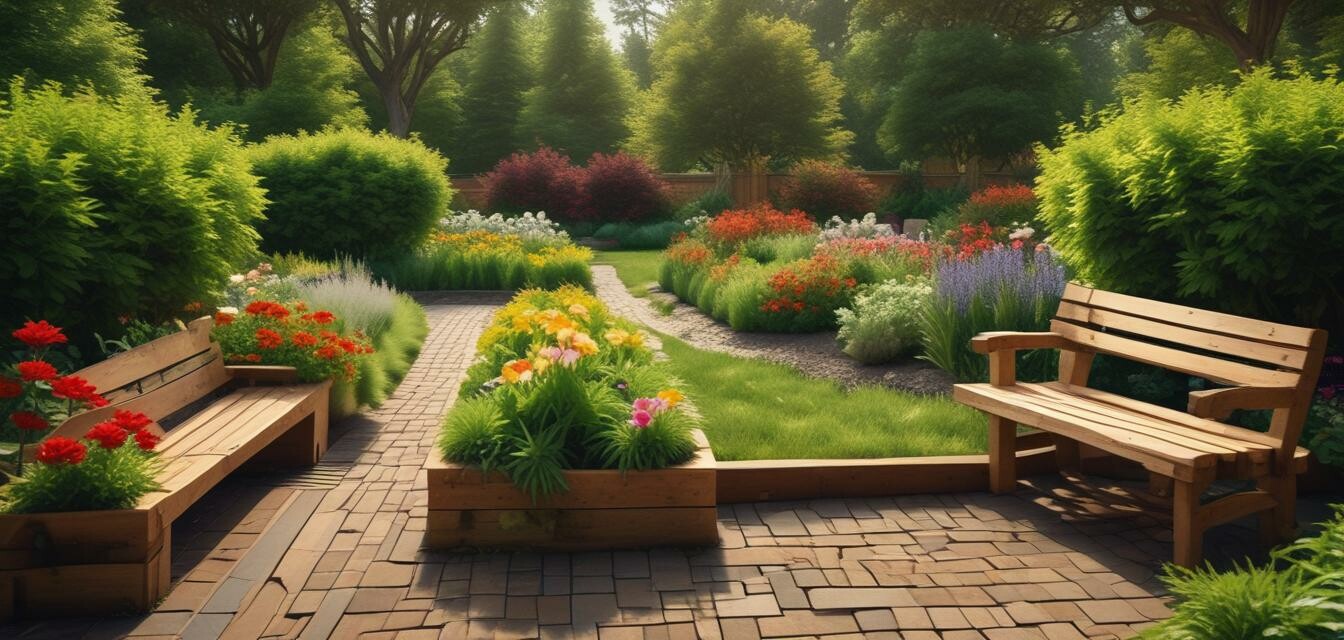
Incorporating Wooden Features into Eco-Friendly Landscaping
Key Takeaways
- Wooden elements can enhance both the aesthetics and sustainability of landscaping.
- Important factors to consider include sourcing, treatment, and maintenance of wood products.
- Using reclaimed wood can significantly reduce environmental impact.
- Wooden features can improve soil health and biodiversity in your garden.
- Regular maintenance can extend the lifespan of wooden elements in your landscape.
Eco-friendly landscaping is not only about choosing the right plants but also integrating materials that enhance both sustainability and beauty. Wooden features can transform your outdoor space, offering a natural aesthetic while promoting environmental stewardship. In this article, we'll explore how to incorporate wooden elements into your landscape design effectively, focusing on sustainability and aesthetic appeal.
The Benefits of Wooden Features in Landscaping
Wooden elements in landscaping provide a range of benefits that contribute to both visual appeal and environmental sustainability. Here are some of the key advantages:
| Benefit | Description |
|---|---|
| Natural Aesthetics | Wood complements natural surroundings, providing a warm and inviting feel to gardens. |
| Versatility | Wood can be crafted into various shapes, sizes, and structures for diverse landscaping needs. |
| Sustainability | When sourced responsibly, wood is a renewable material that can help reduce the carbon footprint. |
| Soil Health | Wood components such as mulch can improve soil structure and health over time. |
Types of Wooden Features for Landscapes
There are many ways to incorporate wooden features into your outdoor settings. Below are some popular types of wooden elements that not only look great but are also beneficial to the environment:
- Wooden Fencing: Offers privacy and security while blending with the natural landscape.
- Raised Garden Beds: Enhances soil drainage and can be made from reclaimed wood, allowing for sustainable gardening.
- Benches and Seating Areas: Provides a space to relax and enjoy the beauty of the outdoors.
- Wooden Pathways: Guides visitors through your garden while reducing soil compaction.
- Decking: Expands usable outdoor space, offering a beautiful area for gatherings or contemplation.
Choosing Sustainable Wood Products
When selecting wood for your landscaping projects, it is essential to consider sustainability. Here are tips for making responsible choices:
Tips for Selecting Wood
- Opt for locally sourced wood to minimize transportation emissions.
- Choose products made from reclaimed wood to reduce waste and environmental impact.
- Look for wood treated with eco-friendly finishes to protect it from the elements without harming the environment.
- Research the wood’s origin to ensure it comes from sustainably managed forests.
Maintaining Wooden Features
Proper maintenance can ensure that your wooden landscaping features last for years to come. Consider the following practices:
- Inspect wooden elements regularly for signs of wear or rot.
- Clean surfaces with mild soap and water to remove dirt and debris.
- Apply eco-friendly wood preservatives every few years to protect against moisture and pests.
- Replace or repair any damaged sections promptly to maintain structural integrity.
Conclusion
Incorporating wooden features into your landscape design can significantly enhance both its beauty and sustainability. By carefully sourcing and maintaining your wooden elements, you can create a harmonious outdoor environment that resonates with nature. For more tips on sustainable practices in the natural wood product industry, be sure to check our other articles. Embrace the timeless charm and eco-friendliness of wood, and let your landscape reflect both your style and commitment to protecting the planet.
Pros
- Enhances natural aesthetics
- Promotes sustainability
- Improves biodiversity
- Offers versatility in design
Cons
- Requires regular maintenance
- Can be susceptible to pests if untreated
- Quality may vary based on sourcing
For more insights on maintaining and choosing wooden features, feel free to browse our extensive Sustainable Practices section and discover how you can contribute to a healthier planet through informed choices.